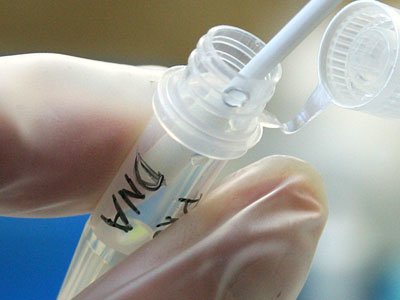A novel technique shown by researchers in Belgium can estimate the age of a criminal, or victim for that matter, by interpreting genetic code found in blood or tooth samples. Of course, there are many methods employed by forensic scientists that are used to estimate age, but sometimes victims might be so torn up (burned, severed limbs, etc.) that there’s no other way to estimate the age. Likewise, if the only lead a crime scene investigator has is a blood stain left over by the criminal or possibly some other DNA containing sample, then this is the only chance they have of at least profiling the age. Sometimes, this can make all the difference in the world since it narrows the search and makes police work a lot more bearable.
 TDL Genetics
TDL Genetics
The DNA and genetic material is not fixed, but always changing. Depending on our environment some genes might be turned on or off, and these changes in the genome can even be passed on to offsprings. The study of live DNA changes is called epigenetics. Likewise, the genome changes as we age. All our organs, for instance, are regulated by the genome so you can tell how old a person is by identifying which key genes are switched on or off, say researchers at Belgium’s University of Leuven (KU Leuven).
“The behaviour of our organs and tissues depends on which of our genes are activated,” Bram Bekaert, a forensic scientist at KU Leuven, explained in a press release. “As we grow older, some genes are switched on, while others are switched off. This process is partly regulated by methylation, whereby methyl groups are added to our DNA. In specific locations, genes with high methylation levels are deactivated.”
For now, the researchers tested this hypothesis using only four DNA methylation markers. Even so, they were able to accurately assess a person’s age using blood and tooth samples with a margin of error of 3.75 years and 4.86 years, respectively.
The findings appeared in the journal .



